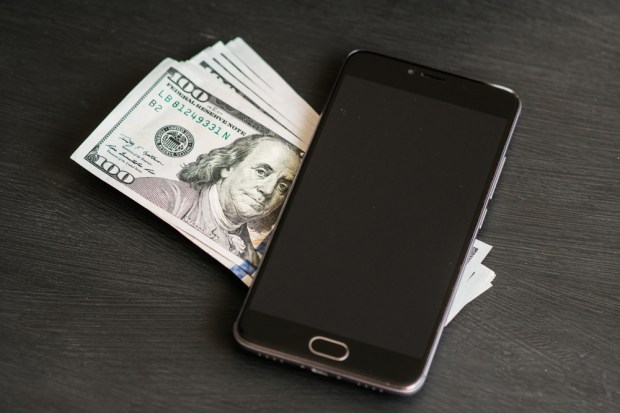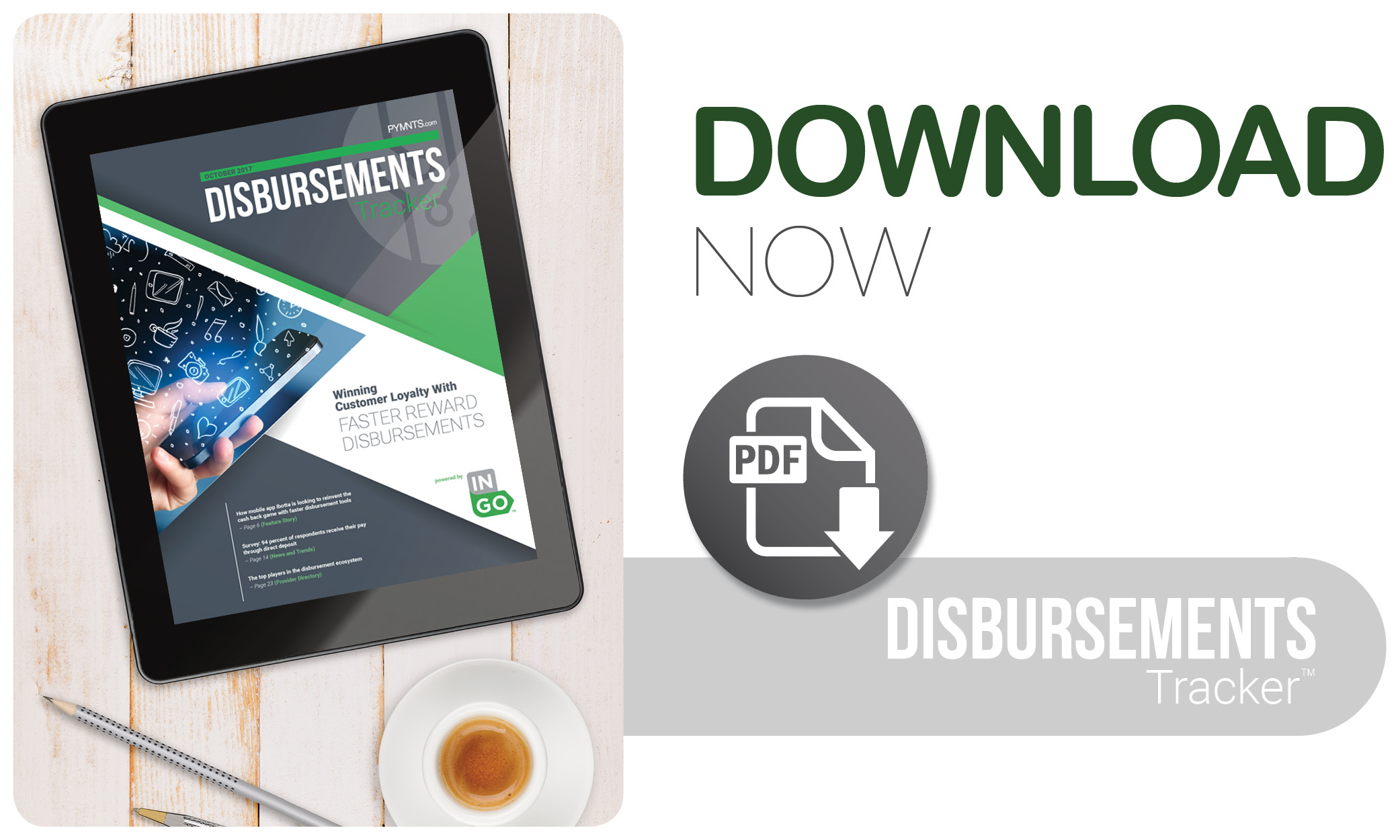Winning Customer Loyalty With Faster Reward Disbursements

Here’s one: paying consumers their cash back rewards with a check. We wish we were kidding. For the October Disbursements Tracker™, in collaboration with Ingo Money, PYMNTS examines the digital innovations taking place in the disbursements of rewards, including an interview with Ibotta CEO Bryan Leach. Plus, news from around the space, a data dive on government benefits disbursements and 10 new additions to the provider directory, inside the Tracker. P.S., #KillTheCheck.
In terms of loyalty and reward incentives, cash back is king.
That’s the key takeaway from a recent survey of 1,271 credit card holders exploring consumers’ motivation for signing up for credit cards with rewards. More than 27 percent of respondents said a card’s cash back incentive was the “main reason” they signed up in the first place, followed by rewards for travel-related expenses (21.1 percent) and no annual fee (17.7 percent).
Credit card companies are not the only ones to offer cash back to their customers to retain loyalty, though. Retailers are also looking to offer cash back to their customers to build customer loyalty. A recent survey found 71 percent of loyalty program participants consider cash back to be a top benefit of joining such a program, an indication that consumers are more likely to shop with a business offering financial incentives for their patronization.
And, cash back rewards programs vary by provider. Some allow consumers to build up points through purchase activity that can then be applied to rewards like travel expenses. Other programs allow customers to cash out their benefits by converting points into gift cards or by delivering monetary rewards back into their accounts.
Over the years, businesses specifically focused on providing consumers with rewards and cost savings for their shopping efforts have emerged across multiple brands. Notable players in the space include eBates and Checkout 51, both of which offer to deliver cash back earnings to shoppers by issuing paper checks (or disbursement through a PayPal account, for eBates users).
Another player in the market is Ibotta, a mobile app through which users snap photos of their purchases to redeem images for cash back rewards. PYMNTS recently spoke with Bryan Leach, founder and CEO of Ibotta, who discussed how the service is changing the way consumers view cash back rewards, removing paper checks from the equation and offering retailers new methods to engage with consumers.
Centralizing rewards
For some consumers, keeping track of various loyalty programs across several brands can be a tall order. Beyond loyalty programs from a plethora of consumer brands, discounts on purchases are also available through coupons that arrive in the mail or through shopping circulars. But, to redeem those offers, consumers must first locate them, cut them out and remember to bring and use them when they make an in-store purchase. Digital options for coupons exist, of course, but they can lead to overloaded email inboxes and can be a nuisance to sort, let alone remember to use.
The idea behind, Ibotta, Leach said, is to centralize the shopping experience so consumers don’t have to move between different programs on their smartphones or track down coupons.
“People don’t want to have a separate piece of software on their phone for every place they shop,” Leach said.
He added that coupon-cutting for savings can be equally frustrating because consumers must spend time scouring weekly circulars or keeping track of physical coupons. Ibotta, Leach said, aims to alleviate that frustration by giving shoppers a central place for redeeming cash back earnings.
“The idea was to build ‘one ring to rule them all,’ a single starting point where, no matter what you are going to buy, you could have a more streamlined, easier, simplified process and you can earn cash rewards,” he explained.
A consumer can select offers from participating stores after he or she signs up for an account. Once done with shopping, the user takes a photo of the purchase receipt and the Ibotta app will match the items with saved, personalized offers, then disburse cash back rewards to the user’s Venmo or PayPal account. The service can also be linked to certain retailers’ loyalty cards — including Best Buy, Hotels.com and Whole Foods, among others — allowing consumers to redeem earned savings as gift cards from those vendors.
Cash back, checking out
While some rival services like eBates and Checkout 51 deliver customers’ cash back earnings via paper checks, Leach said his company has no plans to follow suit. The reason? The paper check format doesn’t work for the millennial consumers using the service, he explained.
“It’s not for our demographic,” Leach said. “If you look at [some] 25- to 35-year-old millennial shoppers that comprise the bulk of our user base, they’re not sure what a check is.”
Leach’s impression is in line with broader attitudes about where the paper check stands as a contemporary payment option. In short, it doesn’t.
According to the most recent PYMNTS Disbursement Satisfaction Index™, the paper check received the lowest score among all payment methods types. On a scale of zero to 100, the paper check received a low score of 4.4, considerably lower than other payment options including instant credit, direct deposit and cash.
Given the overall poor impression consumers have of paper checks and millennial shoppers’ preference for receiving cash back through faster delivery methods — like Venmo and gift cards, for example — Leach sees no reason for the check to play a role in how the company delivers cash back rewards.
“I don’t think that’s generationally on point,” he said. “We’ll think of other ways for people to use their Ibotta balance[s], but I don’t think checks are in our future.”
Building long-term relationships
In addition to offering consumers a faster, more efficient option to get cash back for their shopping habits, Leach said the company’s other initiative is to help retailers use the app to engage their consumers. This could be through branded content, such as brief videos, how-to items, recipes, interesting facts and quizzes about the products, among other options.
Ibotta’s advertising strategy and performance are also directly linked to its cash back offering. Rather than rely on advertising revenue from display ads — which, Leach noted, is not necessarily germane to the customer’s user experience — he described the company’s business model as performance-based and said it charges advertisers based on the number of units sold using the service.
This model enables the company to earn a commission on sales generated through the service. Ibotta then shares its advertising revenue proceeds with its user base as cash back rewards, offering consumers a portion of the profits they helped the company earn.
This type of approach, Leach said, enables retailers to connect with consumers in a different way than by simply offering them discounts or loyalty perks.
“It’s a way for brands to have a connection with an end consumer,” he said. “It’s kind of a two-way dialogue.”
As more millennials gain a greater share of purchasing power, retailers will be under increased pressure to rethink how they offer loyalty and cash back to consumers. In fact, 68 percent of millennial shoppers said they would switch where they shop if they could get a better rewards program elsewhere, according to a recent report.
Putting incentives and rewards into a central mobile app might be a wise starting place when reinventing the cash back market.
. . . . . . . . . . . . . . . .
TO DOWNLOAD THE OCTOBER EDITION OF THE PYMNTS.COM DISBURSEMENTS TRACKER™, POWERED BY INGO MONEY, CLICK THE BUTTON BELOW.
The PYMNTS.com Disbursements Tracker™, powered by Ingo Money, is your go-to resource for staying up to date on a month-by-month basis on the trends and changes in the digital disbursement space.

